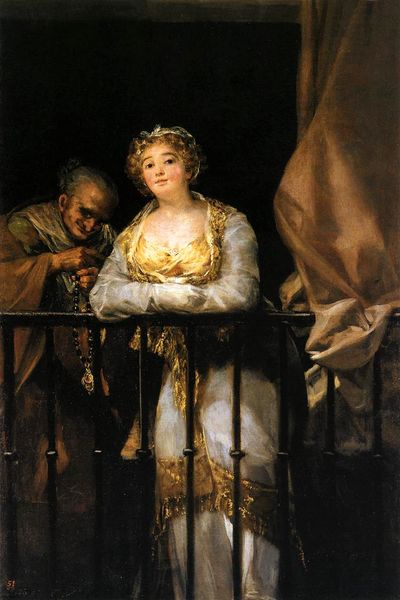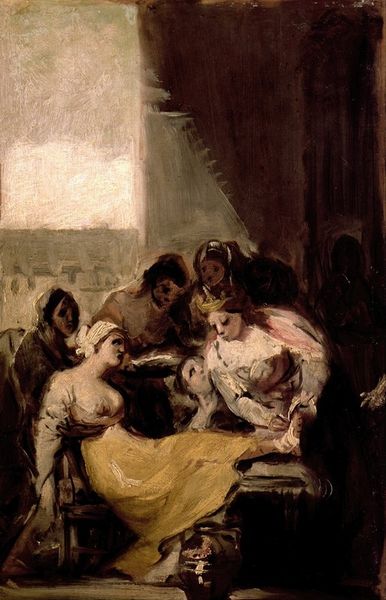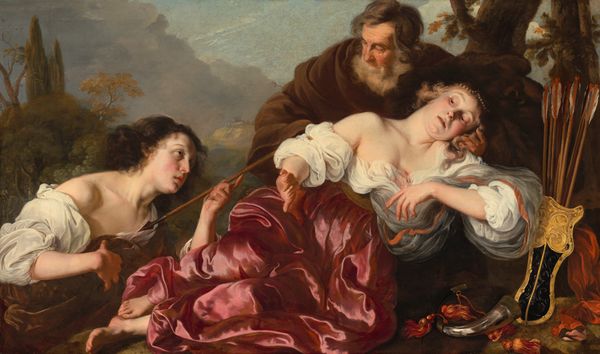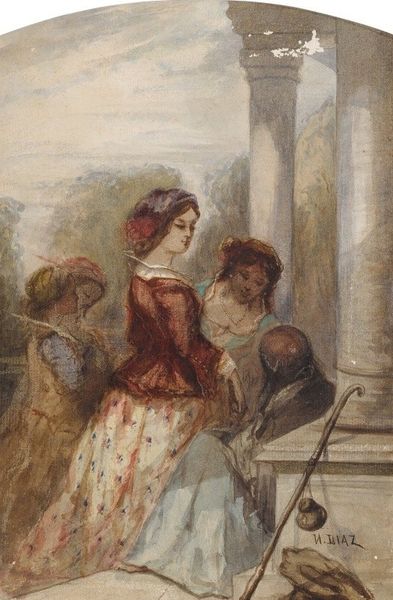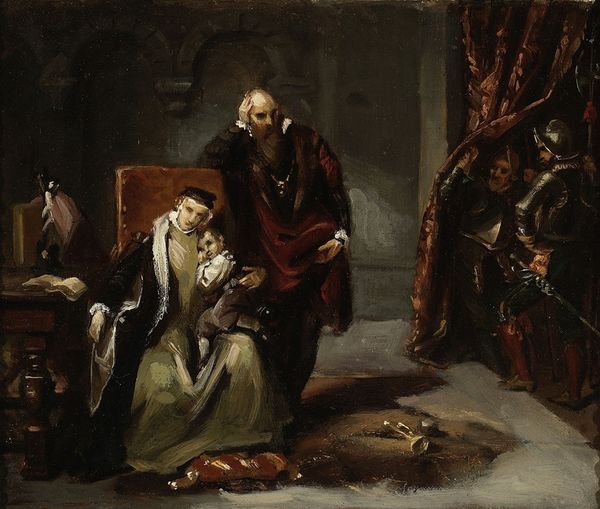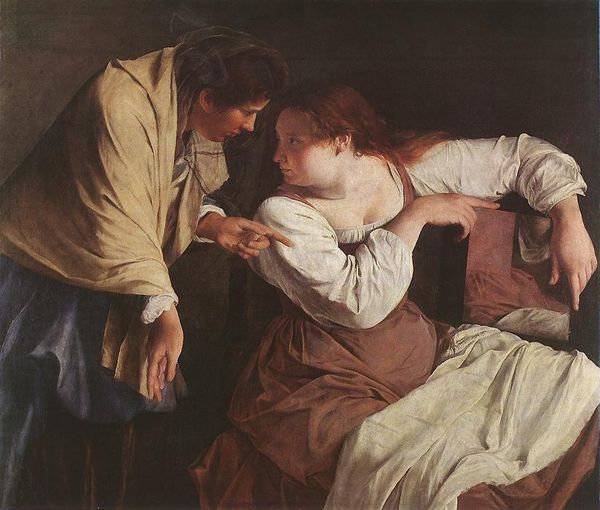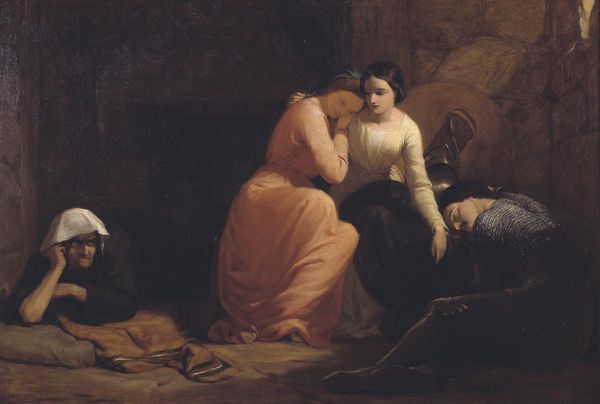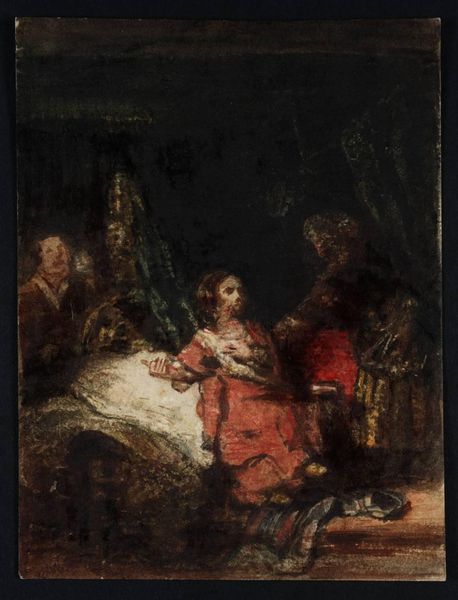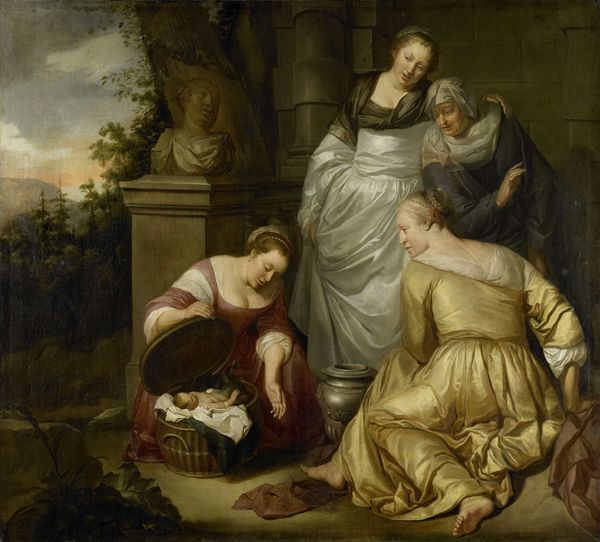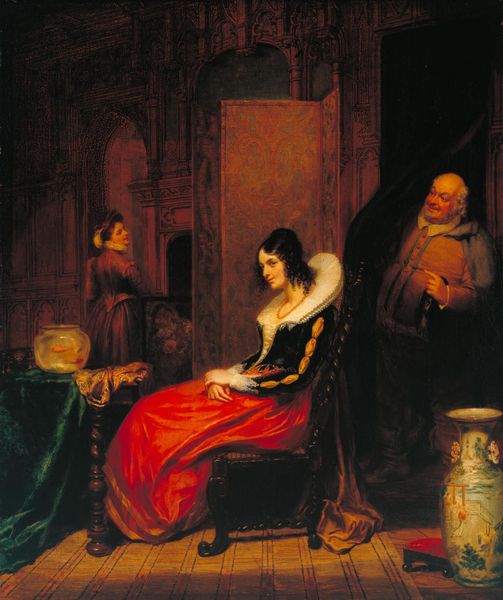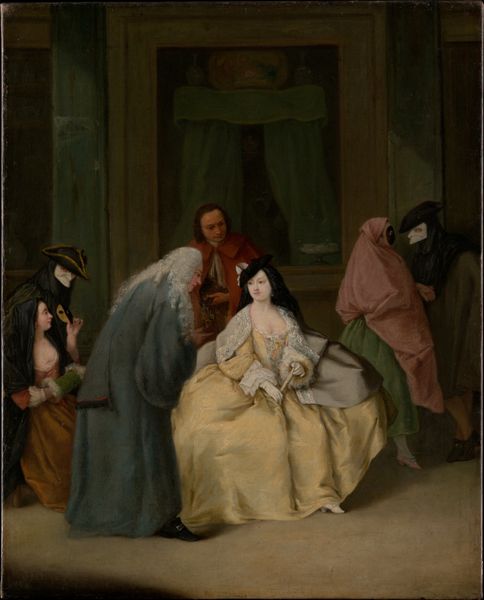
painting, oil-paint
#
portrait
#
neoclacissism
#
painting
#
oil-paint
#
oil painting
#
romanticism
#
genre-painting
#
portrait art
Copyright: Public Domain: Artvee
Curator: Before us hangs Francisco de Goya's "Majas on a Balcony," dating from around 1800-1810. The medium here is oil paint on canvas. Editor: There's an unsettling, theatrical quality. The contrast of light on the women against the murky background and lurking figures is quite striking, and it creates an oddly intimate yet voyeuristic composition. Curator: Indeed. The stark chiaroscuro contributes significantly. If you examine the two women, or "majas," closely, their opulent dresses shimmer, thanks to the rapid, almost gestural brushstrokes Goya employs. But what do we make of those obscured figures in the shadows? Editor: Ah, now that’s the point, isn't it? These “majas” weren't aristocrats, but women known for their flamboyant style and independence. By including the obscured male figures, Goya might be making a statement about societal constraints, about how even these seemingly liberated women were still watched, judged, and potentially, exploited. Consider this painting existing on the cusp of Neoclassicism and Romanticism and how those sociopolitical dynamics permeate this work. Curator: Interesting perspective. From a formal standpoint, note the strong horizontals created by the balcony railing. They neatly divide the canvas, emphasizing a sense of confinement and separation. Goya plays with line and form brilliantly here. The contrast between the women's luminous clothing and the faceless observers is a perfect dichotomy. Editor: The male figures definitely act as shadowy counterparts to the brightly dressed women. They emphasize the dichotomy you mentioned, heightening the undercurrent of suspicion and power dynamics between genders in the society in which this was created. Are they admirers? Or something more sinister? That ambiguity is key, isn’t it? Curator: Precisely. The painting masterfully explores duality through formal elements, offering a social commentary through composition. Editor: I agree. The play of light and shadow, combined with the contextual elements of the historical backdrop in Spain, transforms a seemingly straightforward genre painting into a subtly potent statement on social and gender politics. I find the intentional choices made about color to further create drama intriguing and engaging to this very day.
Comments
No comments
Be the first to comment and join the conversation on the ultimate creative platform.
